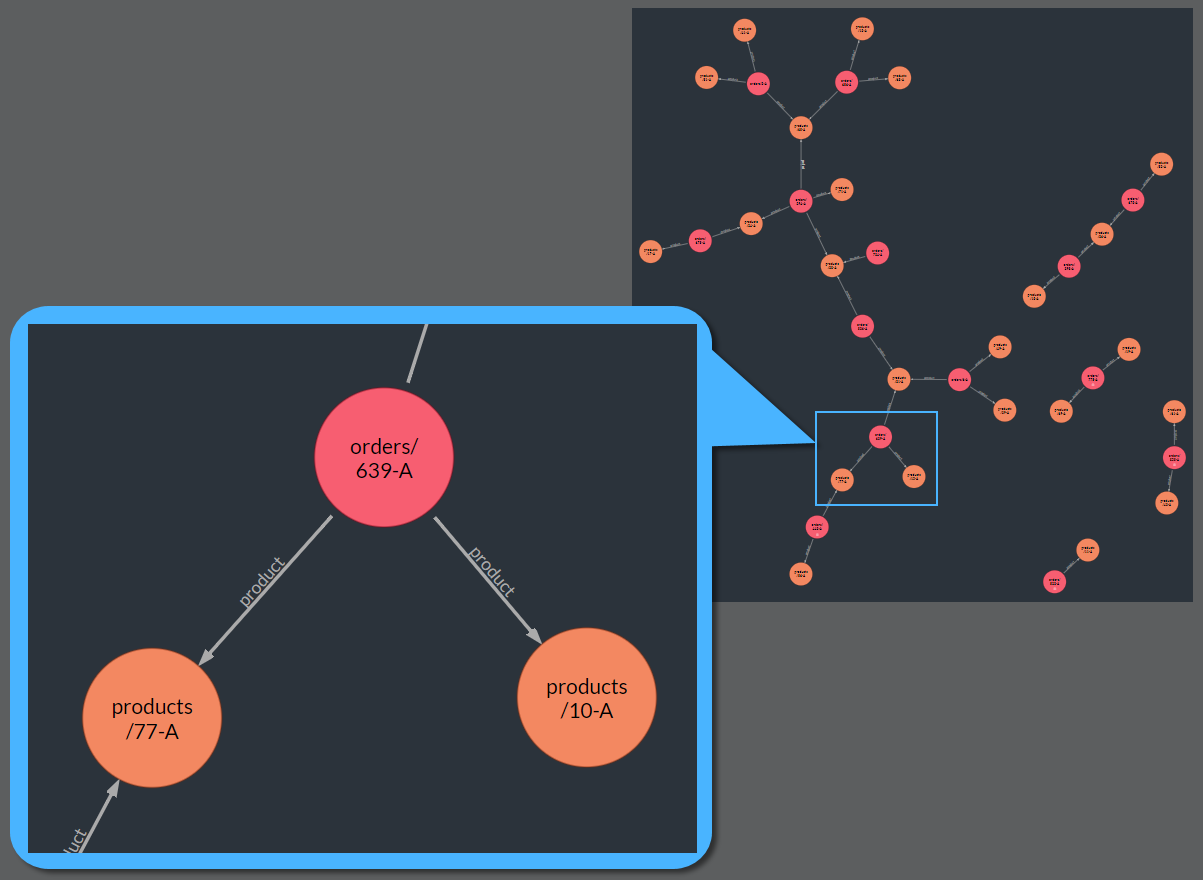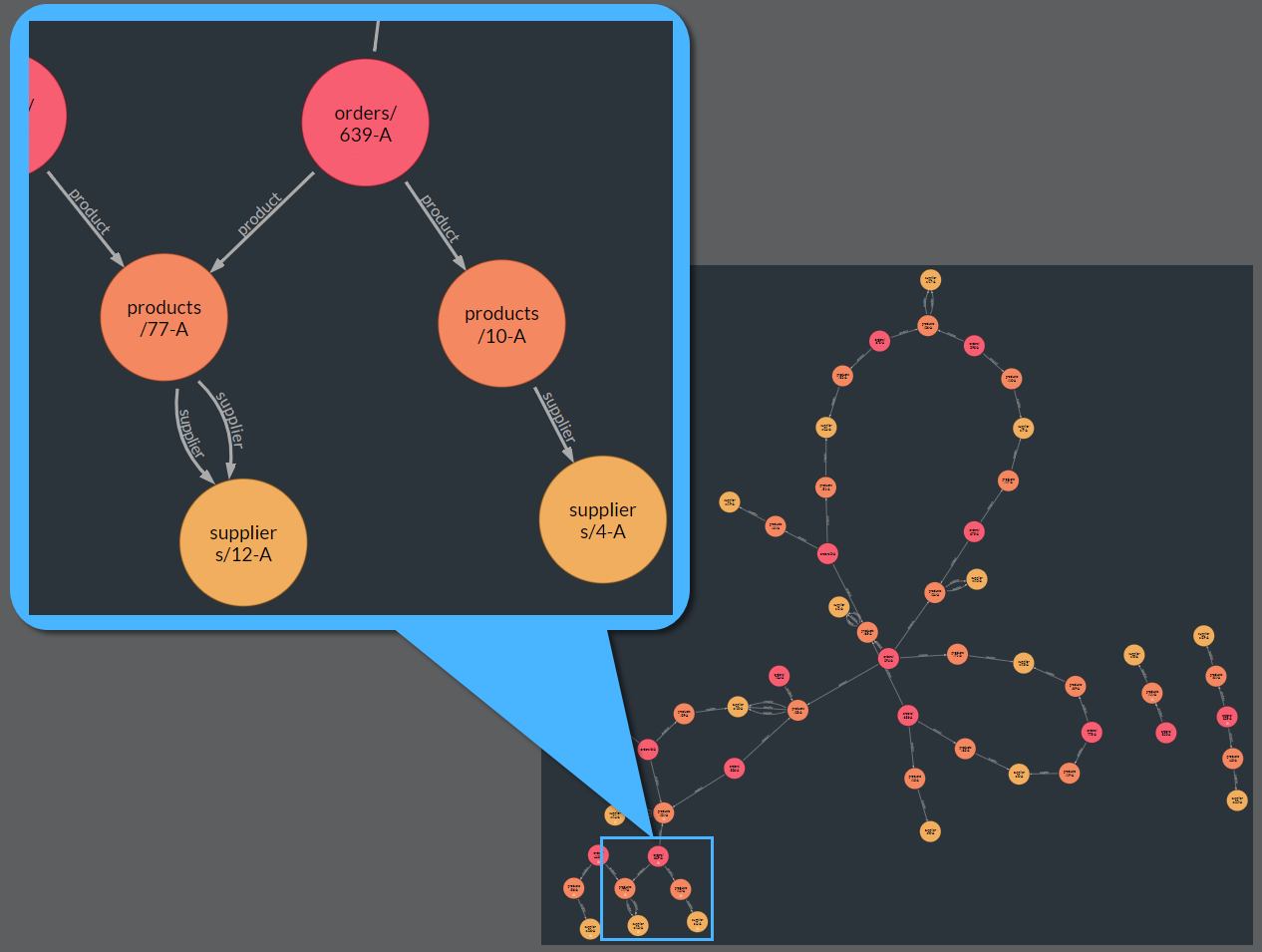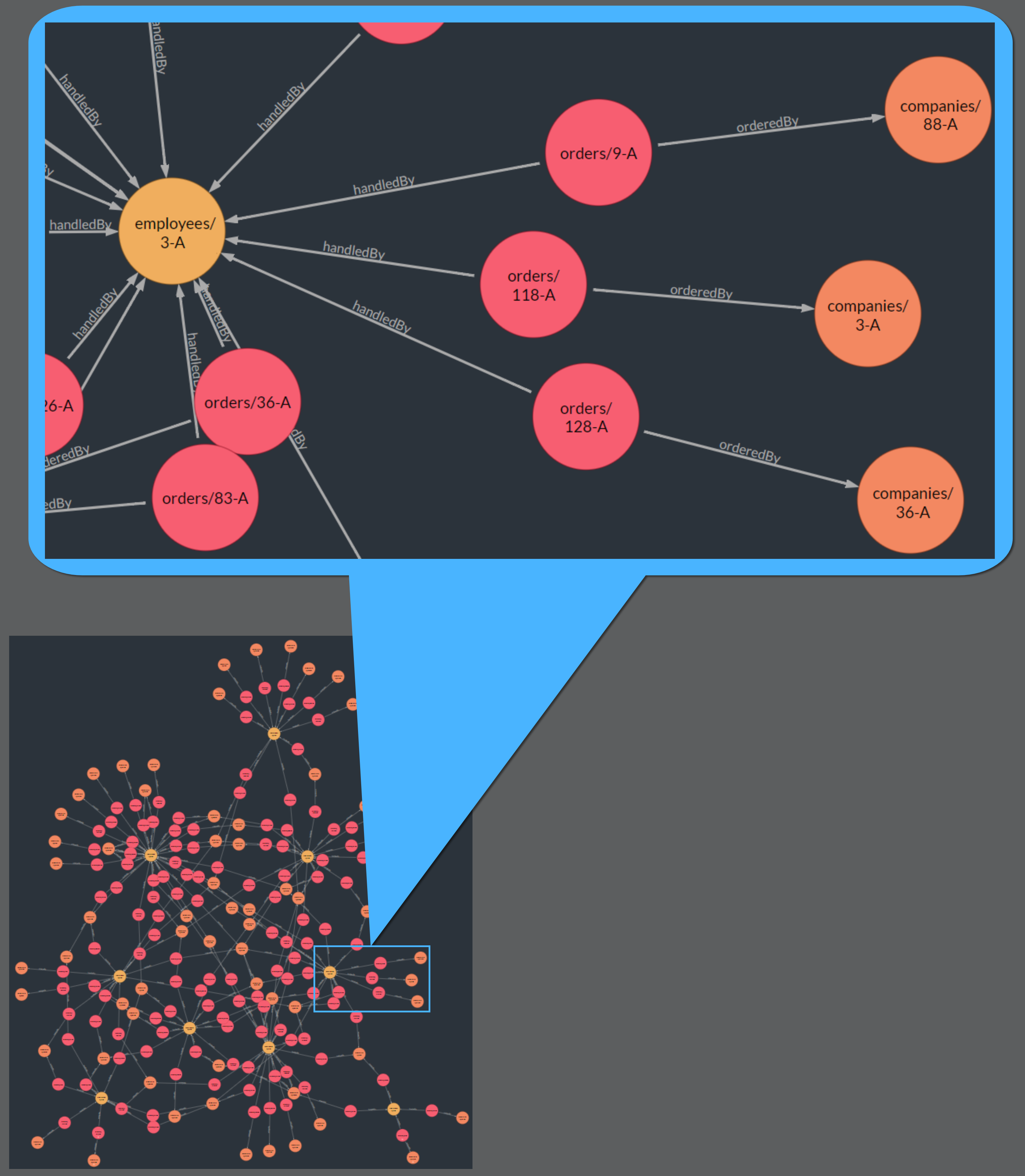Graph Queries Expanded Search Patterns
Graph queries are modular structures that can be easily expanded from data-node to
edge and from edge to node in order to reveal potential layers of meaningful data.
This article focuses on simple patterns, including directional and bi-directional queries.
Other types of patterns include
multi-section
and recursive
queries.
- In this page:
Expanding The Search Pattern
You can expand an existing graph query simply by adding it an edge-and-node pair, as follows.
-
Initial query:
Here we find all the orders made by a company we want to investigate, and all the products that each order includes.
match (Orders as orders where Company = "companies/34-A")- [Lines[].Product as product]-> (Products as products)
Initial Query Results
-
Expanded query:
And here we expand the query to also find each product's supplier.
match (Orders as orders where Company = "companies/34-A")- [Lines[].Product as product]-> (Products as products)- [Supplier as supplier]-> (Suppliers as suppliers)
Expanded Query Results
The expanded search pattern locates a new layer of relations and data nodes, by querying retrieved products and finding which suppliers they lead to.
Bi-Directional Queries
-
Directional Queries
In each section of the query, an origin data-node clause is directed to a destination data-node clause to its right or to its left.
The following two queries for example, searching for orders to France, are equivalent.To The Right To The Left match (Orders as orders where ShipTo.Country = "France")- [Company as company]-> (Companies as companies)match (Companies as companies) <-[Company as company] -(Orders as orders where ShipTo.Country = "France") -
Bi-Directional Queries
A query may be combined of sections that point to the right and to the left.
Here is one:match (Employees as employees) <-[Employee as handledBy] -(Orders as orders)- [Company as orderedBy]-> (Companies as companies)- The first part heads left, finding orders and the employees that handle them.
(Employees as employees) <-[Employee as handledBy] -(Orders as orders) - The second part heads right, finding orders and the companies that make these orders.
(Orders as orders)- [Company as orderedBy]-> (Companies as companies) - Orders, common to both parts, appears only once.
It is origin for both sections.
The query produces these results:

Bi-Directional Query Results
- The first part heads left, finding orders and the employees that handle them.
-
It is equivalent to the following less concise multi-segment query.
Multi-Segment (Intersection) Bi-Directional match //First Segment (Orders as orders)- [Employee as employee]-> (Employees as employees) and //Second Segment (orders)- [Company as company]-> (Companies as companies)match (Employees as employees) <-[Employee as handledBy] -(Orders as orders)- [Company as orderedBy]-> (Companies as companies)
Formatting a query as a bi-directional or a multi-segment structure
is a readability preference.
Operation-wise the two formats are equivalent, since bi-directional queries
are interpreted to single-direction multi-segment queries before execution.